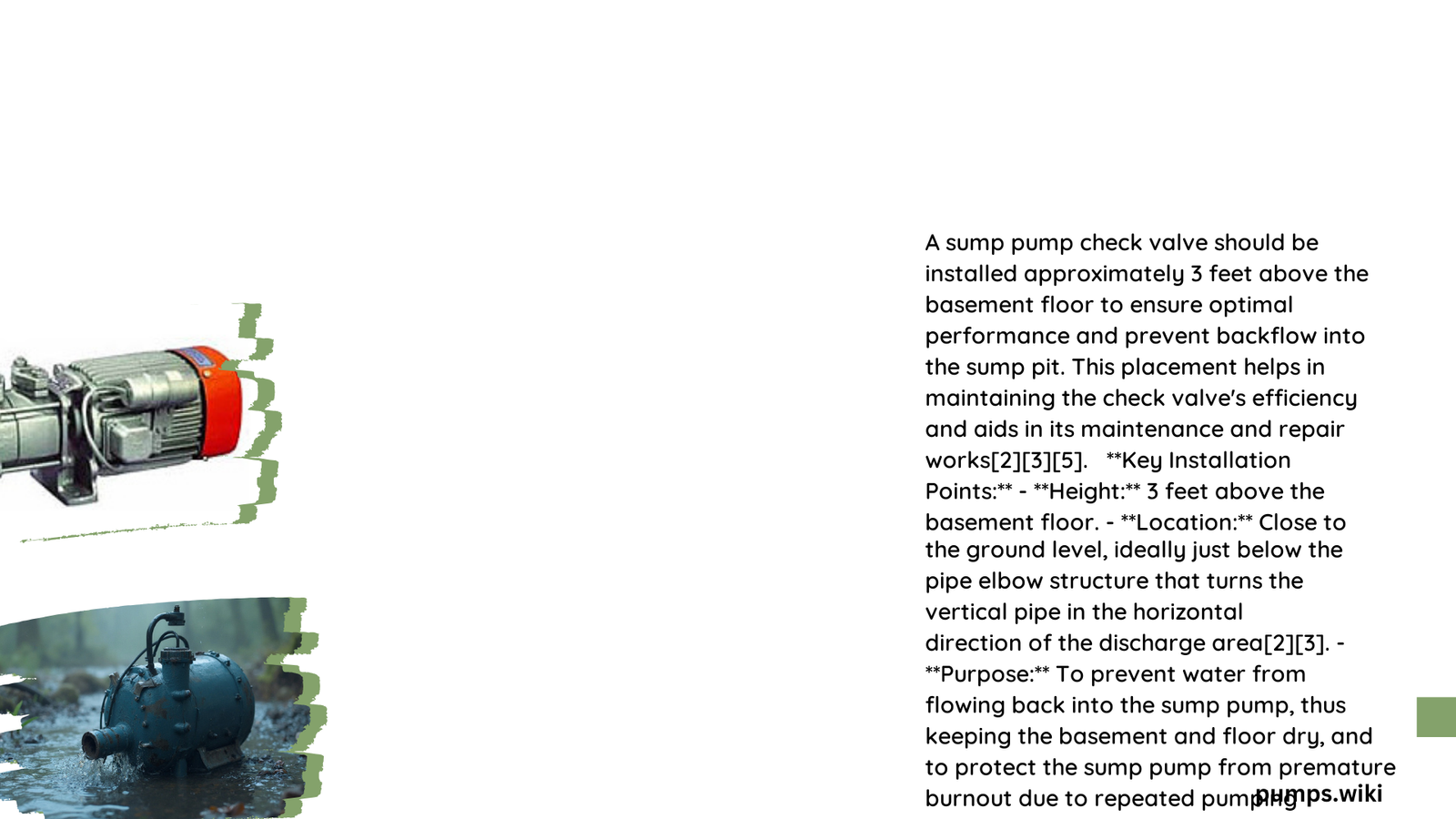Installing a sump pump check valve requires precision and understanding of specific height requirements. Homeowners and professionals must carefully position the check valve between 8 to 12 inches above the floor level, ensuring proper functionality, easy maintenance, and preventing potential water drainage issues that could compromise the pump’s efficiency and longevity.
What Determines the Optimal Check Valve Height?
Proper check valve installation involves multiple critical factors that influence its performance and effectiveness. Understanding these elements helps homeowners make informed decisions about their sump pump system.
Why Does Valve Height Matter?
The height of a sump pump check valve directly impacts:
– Water backflow prevention
– Pump operational efficiency
– Maintenance accessibility
– Long-term system reliability
How High Should the Check Valve Be Installed?
| Height Range | Recommendation | Purpose |
|---|---|---|
| 8-12 inches | Ideal Placement | Easy inspection and servicing |
| 6 inches minimum | Minimum Requirement | Allow air release hole drilling |
| 2-3 feet maximum | Maximum Vertical Limit | Prevent excessive water drainage |
What Are the Key Installation Guidelines?
- Vertical Positioning
- Install vertically in discharge pipe
- Place below pipe elbow turning horizontal
-
Ensure smooth maintenance access
-
Discharge Pipe Considerations
- Cut discharge pipe 3 feet above floor
- Install union for easy pump removal
- Maintain consistent pipe diameter
What Challenges Might Arise During Installation?
Potential installation challenges include:
– Local building code variations
– Pipe material compatibility
– Pump model-specific requirements
– Terrain and basement configuration
How Do Environmental Factors Impact Check Valve Height?
Environmental considerations include:
– Water table level
– Basement moisture
– Potential flooding risks
– Ground slope and drainage patterns
What Tools Are Needed for Proper Installation?
Essential installation tools:
– Pipe wrench
– Level
– Measuring tape
– Pipe cutting tool
– Teflon tape
– Pipe sealant
What Maintenance Practices Ensure Longevity?
Recommended maintenance steps:
– Annual valve inspection
– Check for mineral deposits
– Verify seal integrity
– Test backflow prevention
– Lubricate moving parts
What Professional Recommendations Exist?
Experts suggest:
– Consult manufacturer guidelines
– Consider professional installation
– Understand local building codes
– Perform regular system checks
– Monitor pump performance
Conclusion

Precise check valve height installation is crucial for effective sump pump operation. By following recommended guidelines and understanding specific requirements, homeowners can prevent water damage and ensure reliable drainage system performance.
Additional Tips
- Always prioritize manufacturer instructions
- Consider professional consultation
- Invest in high-quality components
- Perform regular system maintenance
